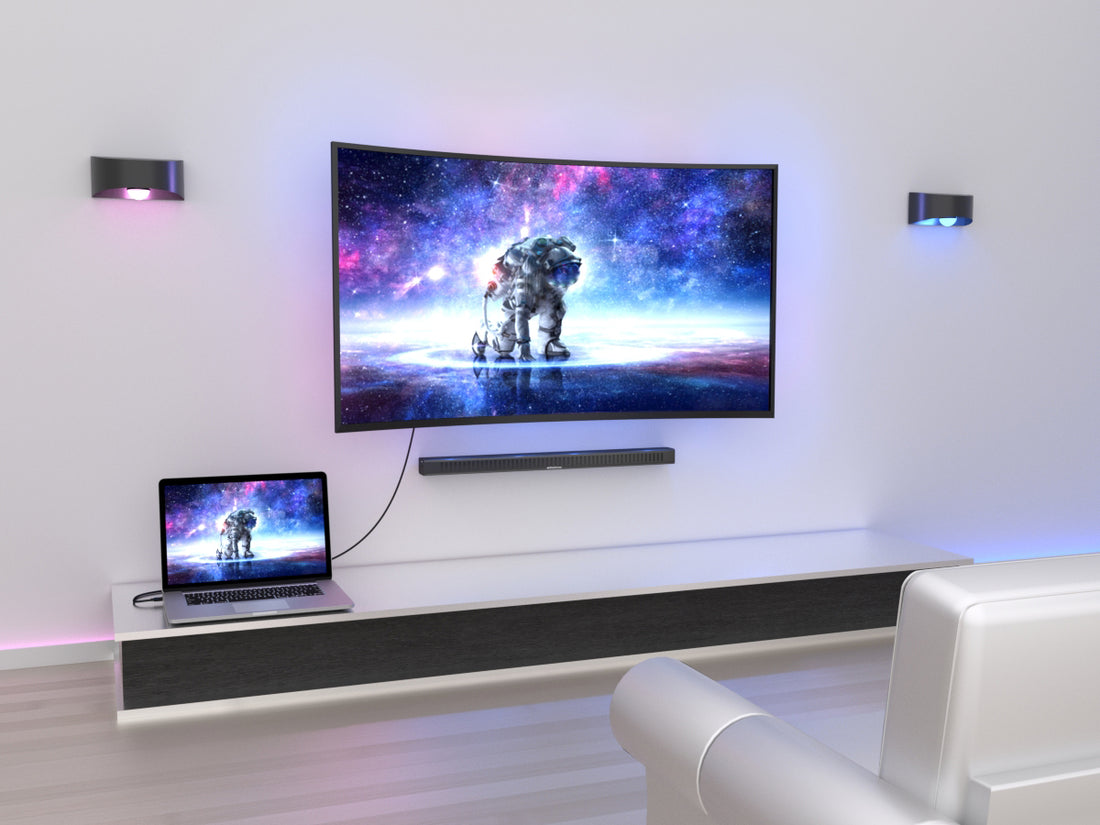
HDMI VS. DISPLAYPORT: WHICH CABLE IS BEST FOR WHAT?
Share

VGA, DVI, and cinch/RCA video cables are tried and tested but no longer state of the art in tech terms. Today, HDMI and DisplayPort dominate the market. Read on to learn all about the differences and which cable to use when.
HDMI cables have been around since 2002, and DisplayPort cables since 2006. Although both technologies are a few years old, they set today’s standards when it comes to connecting devices to a TV or monitor, such as to play video games, watch films, or work on a PC. And as they keep on being updated, these display technologies can now also carry high-res 4K content.
Two not entirely dissimilar standards
There are now several versions of each standard with different ranges of features, making it all the more difficult to see whether HDMI or DisplayPort best fits your needs. There is no general answer to this question either: Both cable types have their advantages and disadvantages.
While they have differences, they are in fact quite similar. It starts with the design: The plugs have different shapes, but their internal design is almost identical. They also have a lot in common technically, with both technologies capable of carrying video and audio. Since version 1.4b, HDMI has supported Full HD at 120Hz. This was increased to 4K at 60Hz with version 2.0, and version 2.1 took things to another level with support for 120Hz or extremely high resolutions of up to 8K.
Today’s DisplayPort (DP) cables have the edge when it comes to refresh rates. Starting with version 1.2, 240Hz is possible at Full HD and 120Hz at 4K. With the successor standard the latter value has doubled, with DisplayPort 2.0 even achieving a frequency of 360Hz in the case of Full HD video. This is achieved thanks to the whopping 77.37Gbit/s of data throughput, making DP 2.0 significantly faster than HDMI 2.1 and its maximum bandwidth of 48Gbit/s. However, DisplayPort 2.0 is still very recent and therefore not widespread.

The choice isn’t always up to you
The question of whether you should use an HDMI or DisplayPort cable depends primarily on which devices you want to connect together. When it comes to hooking up your TV to your video game console, receiver, Blu-ray player, or even your computer, you have no choice: There are practically no TV sets with a DisplayPort connector. Likewise, the other devices mentioned usually only have HDMI outputs – with the exception of the PC. In such cases, the only question you need to ask yourself is what kind of HDMI cable do you need. If you want to connect a PlayStation 5 or Xbox Series X to your 4K TV, you should go for at least a high-speed HDMI 2.0 cable. If you don’t, the frame rate will be limited to 30fps at the TV’s maximum resolution setting.
DisplayPort is only an alternative in the PC world, with the latest monitors always featuring an HDMI and a DP input. But when should you use which technology? Quite simply: DisplayPort should be your choice if you want to enjoy the best refresh rate for smooth video when gaming. This requires a fast graphics card and a screen with a correspondingly high frequency rate. High-res 144Hz monitors require a DisplayPort signal; HDMI is simply not fast enough. Ideally, your monitor should also support variable frame rates with technologies such as G-Sync or FreeSync – with the former only working with DisplayPort.

